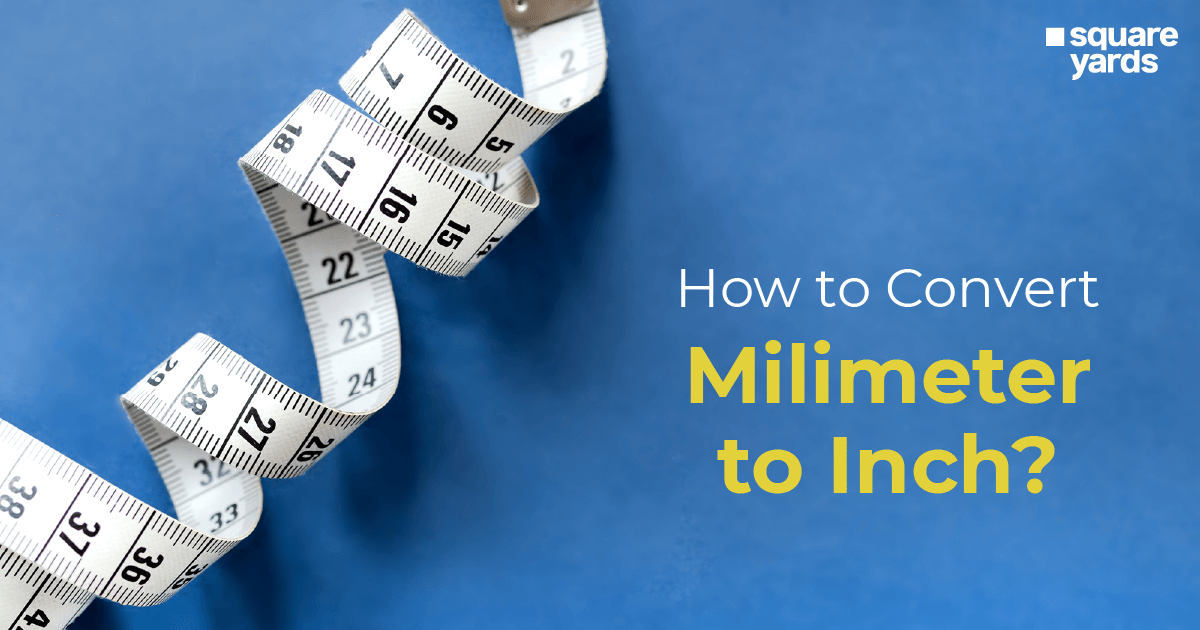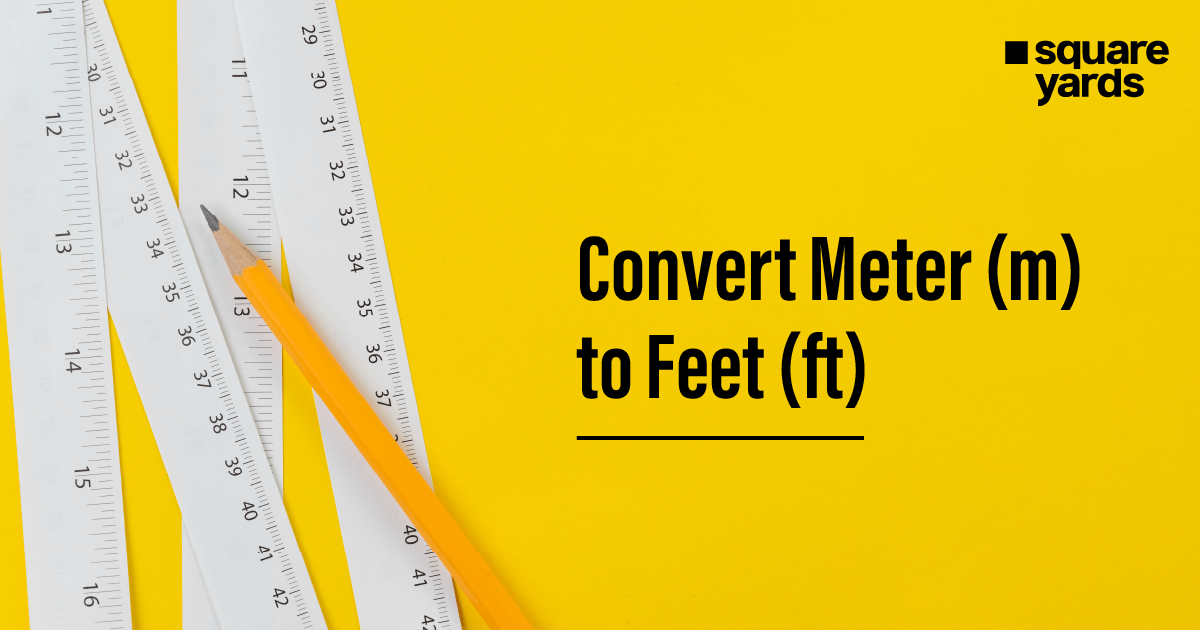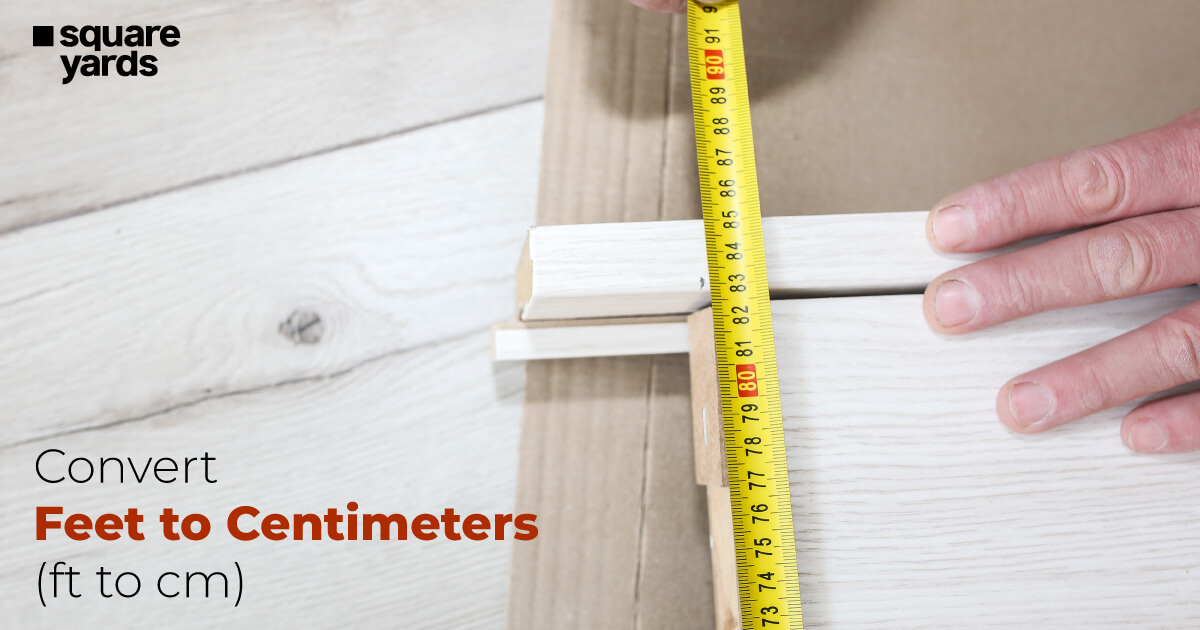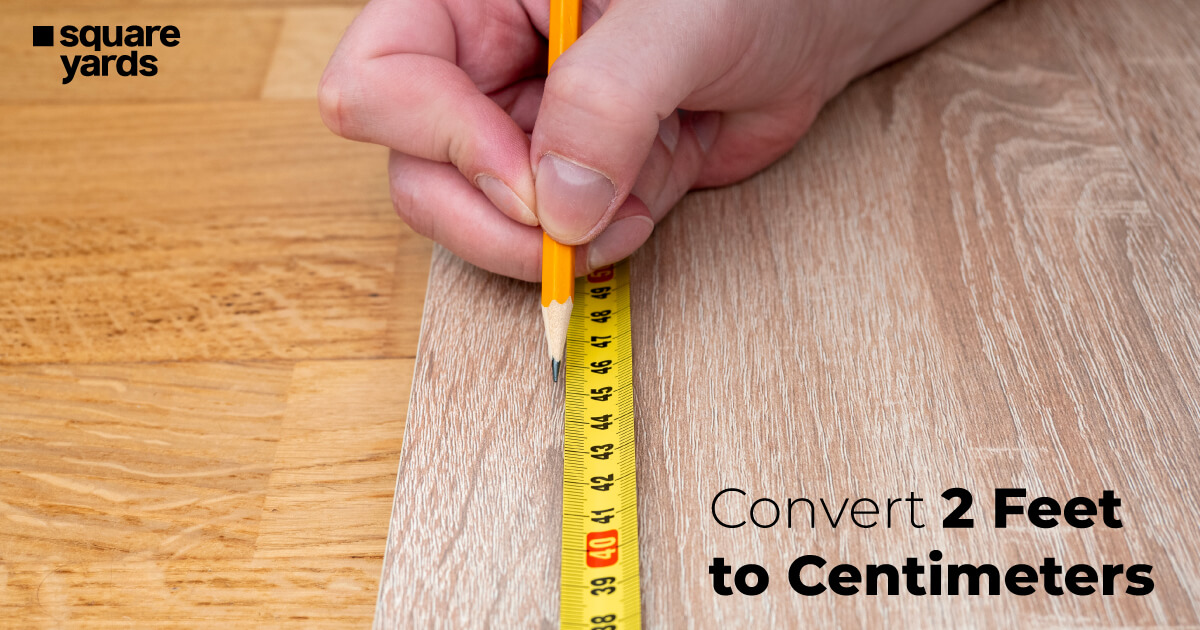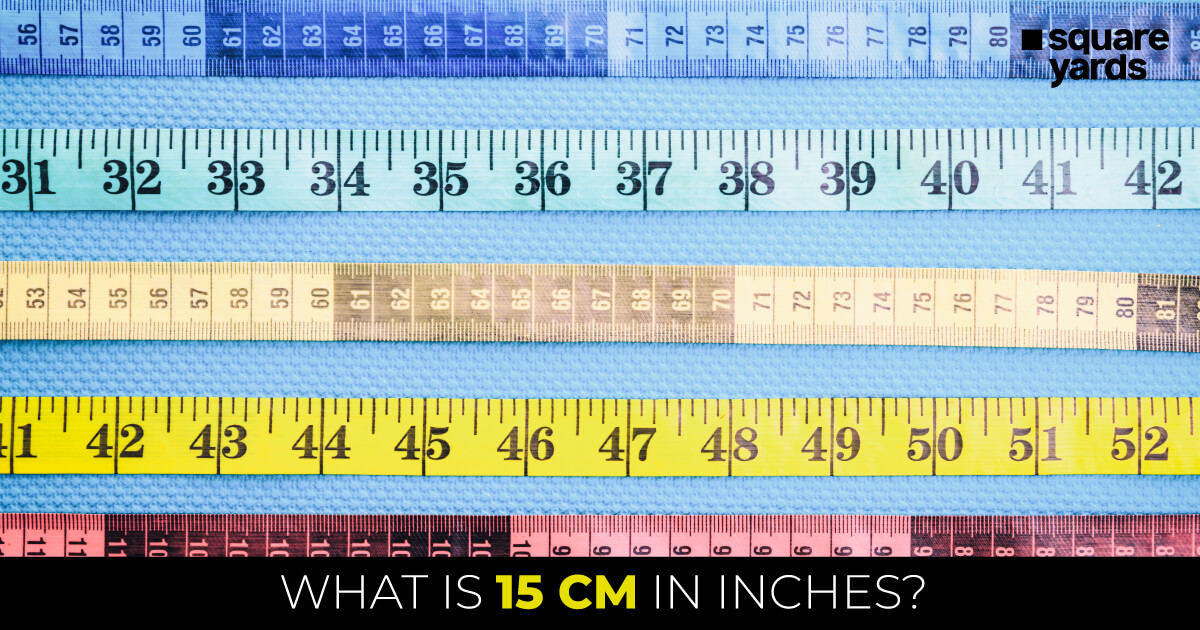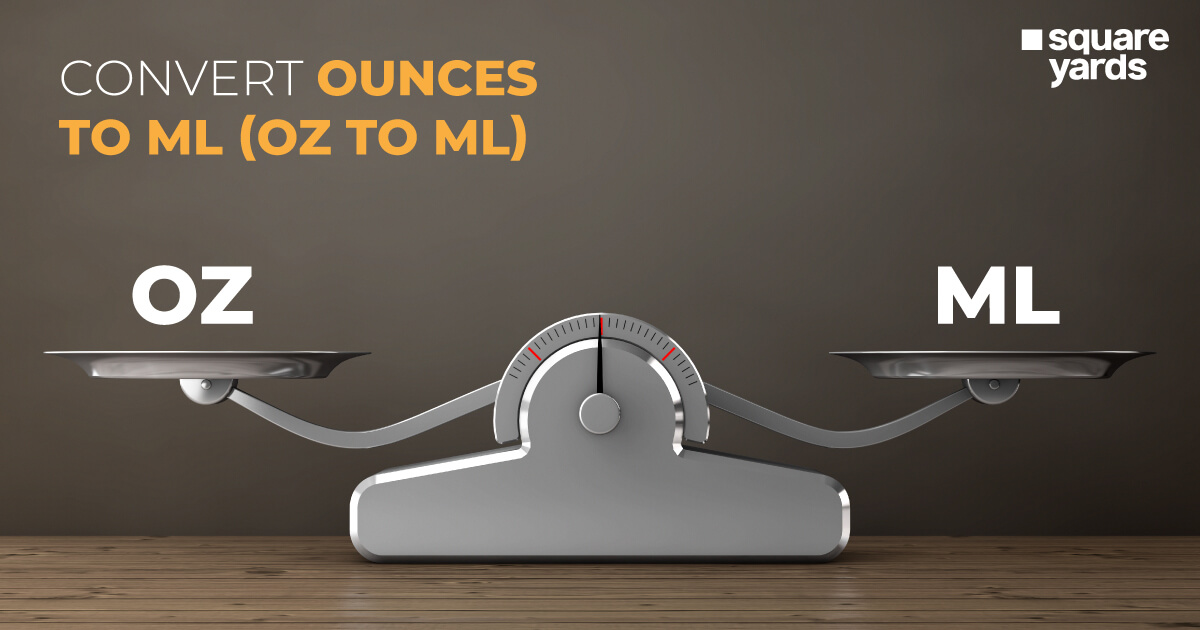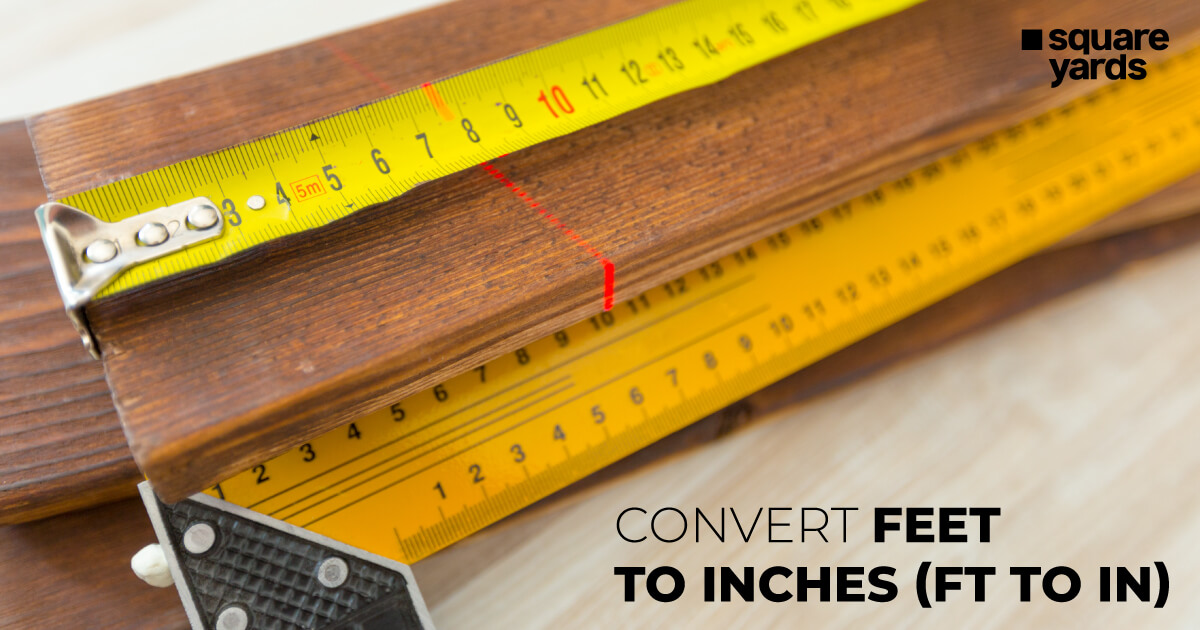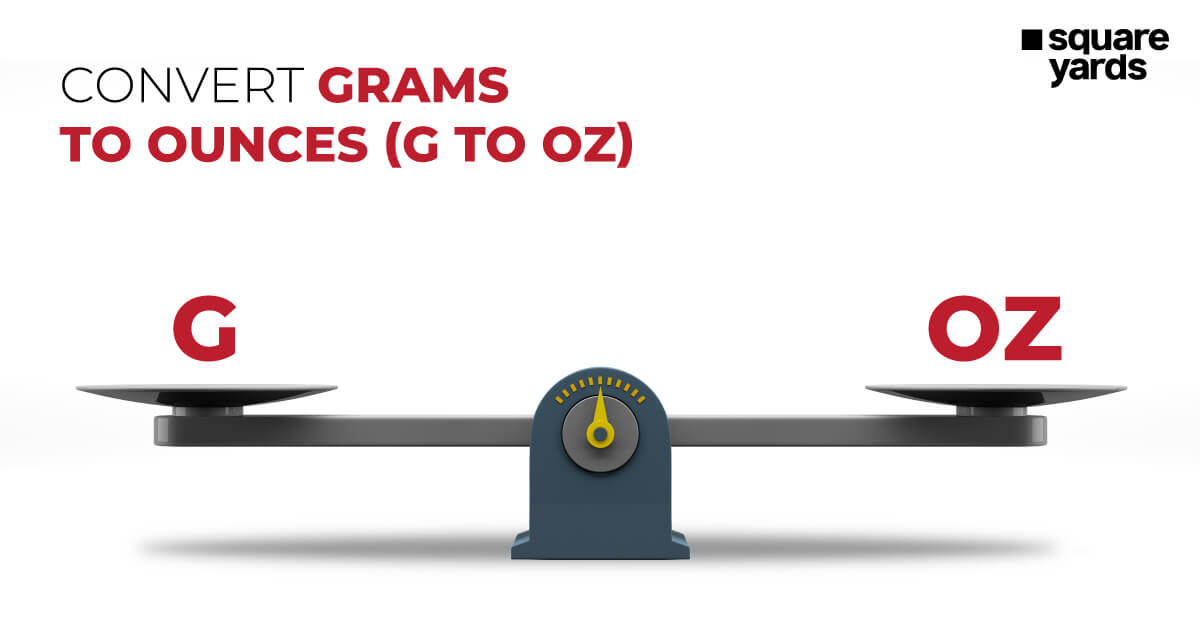If you struggle with arithmetic problems involving conversion and measuring units, this article will help you gain a better understanding of the inches to ft conversion. We are aware of how critical it is in the real estate sector to understand the conversion procedures for various units. But regrettably, it is not always so simple. As a result, we have tried to simplify the process by outlining the conversion procedure and other relevant aspects in this blog. Let’s have a look at the inches to feet formula with the help of some examples.
What is Inches(in)?
The inch is a unit of length in the British Imperial system of measurement. It is well known that this unit, which is used to convert other units of measurement, was created from the width of a human thumb. In the past, there have been many changes in the exact length of an inch, but since the creation of the international yard, the definition of an inch in metric units is 25.4 mm.
The inch is 1/12th of a foot or 1/36th of a yard, deriving from the Latin word for twelfth (‘uncia’). Inches are commonly represented by the letter “in,” but they can also be expressed using the double prime sign; for instance, 4 inches can be written as 4″. In the USA, UK, and Canada, the inch is mostly used to denote length.
-
Current Use of Inches
In the USA, UK, and Canada, the inch is generally used to measure length. In Japan, this unit is also frequently used to measure display panels and electronic components. Additionally, it is employed in the auto sector to gauge the size of cars’ and trucks’ wheels.
-
History of Inches
Inch is derived from the words “ince” or “ynce.” This Latin term, uncia, which signifies one-twelfth of a Roman foot, is the ancestor of this Old English word.
Around 1150, King David I of Scotland gave the definition of “ynce” as the width of a human’s thumb at the base of the nail. To maintain consistency in the unit, the measure was commonly determined by adding three men’s thumb breaths—one little, one medium, and one large—and then dividing the result by three.
In the first half of the 14th century, during the reign of King Edward II, an inch was described as “three dry, round grains of barley put end to end lengthwise.” An inch has occasionally been defined as the length of 12 poppyseeds put together. Since 1959, 2.54 cm has served as the standard measurement for an inch.
What is a Foot(ft)?
The British Imperial system and the United States Customary system both use the foot as a standard unit for measuring length. It is commonly used in the real estate industry and is symbolised by the letter “ft” or the prime sign. The Roman, Greek, Chinese, French, and English systems of measuring have all traditionally employed the foot.
In the past, the worth of a foot fluctuated from place to place and occasionally even from trade to trade. Usually, the length ranged between 250mm and 335mm. In both the imperial and common systems of measurement, a foot is defined as consisting of 12 inches, and a yard as consisting of 3 feet.
The only industrialised nation to use foot rather than a metre in engineering, commerce, and standard applications is the United States. In Canada, the foot is also used to express length.
-
Current Use of Foot
In Britain, the foot is most frequently employed to measure height. This is mostly employed for height measuring in the aviation industry globally.
-
History of Foot
The singular form of feet, foot, is only used in English-speaking countries. It normally refers to 12 inches or one-third of a yard in any of the various ancient, mediaeval, and modern linear measurements. In most countries and for all scientific purposes, the foot has been superseded by the metre, the basic linear unit of the metric system, together with its multiples and subdivisions. In the United States, a foot has been officially defined as exactly 30.48 centimetres since 1959.
Relation Between Inches and Feet
The conversion from inches to ft is a rather simple one. In a foot, there are 12 inches. As a result, all you have to do to convert a measurement in inches to a measurement in feet is divide it by 12.
Abbreviations Commonly Used To Represent Inches and Feet
The foot is marked by a prime, which is frequently approximated by an apostrophe, and the inch is symbolised by a double prime, which is conventionally represented by a double quote symbol. Three feet and two inches, for instance, can be written as 3′ 2′′.
Inches To Feet (in to ft) Formula & Examples
As was already said, one foot is made up of 12 inches. In light of this, the conversion formula from inches to ft is
Feet = Inches / 12
Example 1 – Convert 12 inches to feet.
Formula Used: Feet = Inches/ 12
Calculation: 12 inches/12 = 1 feet
Result: 12 inches is equal to 1 feet.
Example 2 – Convert 10 inches to feet.
Formula Used: Feet = Inches/ 12
Calculation: 10 inches/12 = 0.83333 feet
Result: 10 inches is equal to 0.83333 feet.
Example 3 – Convert 20 inches to feet.
Formula Used: Feet = Inches/ 12
Calculation: 20 inches/12 = 1.6666 feet
Result: 20 inches is equal to 1.6666 feet.
Inches To Feet Conversion Table
Given below is the inches to feet conversion chart for your reference.
| Inches | Feet |
| 1 inch | Is equal to 0.0833333 feet |
| 2 inches | Is equal to 0.1666666 feet |
| 3 inches | Is equal to 0.2499999 feet |
| 4 inches | Is equal to 0.3333332 feet |
| 5 inches | Is equal to 0.4166665 feet |
| 6 inches | Is equal to 0.4999998 feet |
| 7 inches | Is equal to 0.5833331 feet |
| 8 inches | Is equal to 0.6666664 feet |
| 9 inches | Is equal to 0.7499997 feet |
| 10 inches | Is equal to 0.833333 feet |
| 11 inches | Is equal to 0.9166663 feet |
| 12 inches | Is equal to 0.9999996 feet |
| 13 inches | Is equal to 1.0833329 feet |
| 14 inches | Is equal to 1.1666662 feet |
| 15 inches | Is equal to 1.2499995 feet |
| 16 inches | Is equal to 1.3333328 feet |
| 17 inches | Is equal to 1.4166661 feet |
| 18 inches | Is equal to 1.4999994 feet |
| 19 inches | Is equal to 1.5833327 feet |
| 20 inches | Is equal to 1.666666 feet |
| 21 inches | Is equal to 1.7499993 feet |
| 22 inches | Is equal to 1.8333326 feet |
| 23 inches | Is equal to 1.9166659 feet |
| 24 inches | Is equal to 1.9999992 feet |
| 25 inches | Is equal to 2.0833325 feet |
| 26 inches | Is equal to 2.1666658 feet |
| 27 inches | Is equal to 2.2499991 feet |
| 28 inches | Is equal to 2.3333324 feet |
| 29 inches | Is equal to 2.4166657 feet |
| 30 inches | Is equal to 2.499999 feet |
| 31 inches | Is equal to 2.5833323 feet |
| 32 inches | Is equal to 2.6666656 feet |
| 33 inches | Is equal to 2.7499989 feet |
| 34 inches | Is equal to 2.8333322 feet |
| 35 inches | Is equal to 2.9166655 feet |
| 36 inches | Is equal to 2.9999988 feet |
| 37 inches | Is equal to 3.0833321 feet |
| 38 inches | Is equal to 3.1666654 feet |
| 39 inches | Is equal to 3.2499987 feet |
| 40 inches | Is equal to 3.333332 feet |
| 41 inches | Is equal to 3.4166653 feet |
| 42 inches | Is equal to 3.4999986 feet |
| 43 inches | Is equal to 3.5833319 feet |
| 44 inches | Is equal to 3.6666652 feet |
| 45 inches | Is equal to 3.7499985 feet |
| 46 inches | Is equal to 3.8333318 feet |
| 47 inches | Is equal to 3.9166651 feet |
| 48 inches | Is equal to 3.9999984 feet |
| 49 inches | Is equal to 4.0833317 feet |
| 50 inches | Is equal to 4.166665 feet |
Difference Between Inches(in) and Feet(ft)
| Basis of Comparison | Inches | Feet |
| Conversion | 12 inches equals 1 foot | 1 foot equals 12 inches |
| Industry Usage | Industry type – electronic parts | Used to evaluate alleviation (eg. to understand the height of a mountain) |
| Working | Used to gauge materials and tiny items | Used to gauge larger materials and items |
| Abbreviation | inch | ft |
| Conversion (in cm) | 1 inch equals 2.54 centimetres | 1 foot equals 30.48 centimetres |
Frequently Asked Question (FAQs)
You can easily convert inches to feet with the below given formula. Feet = Inches / 12
There are 12 inches in 1 foot.
To perform this conversion keep one thing in mind that one foot is equal to 12 inches. Hence, 5 feet 10 inches are 70 inches.
Since 1 foot is equal to 12 inches, 5 feet will be equal to 60 inches.
To calculate inches to feet, you just need to divide the value in inches by 12. What is the formula for inches to feet?
How many inches are there in 1 foot?
What is 5 feet 10 inches in feet?
How many inches are in 5 feet?
How do you convert inches to feet?

